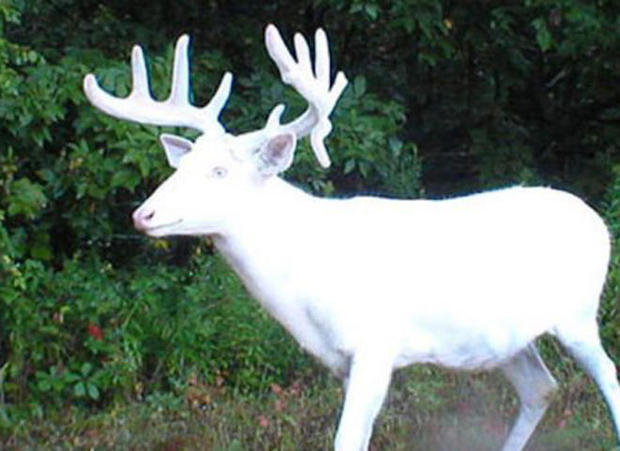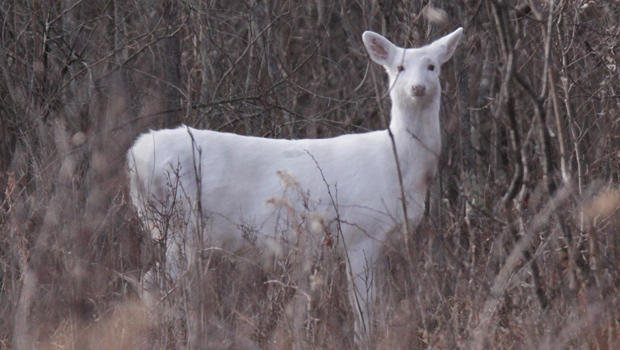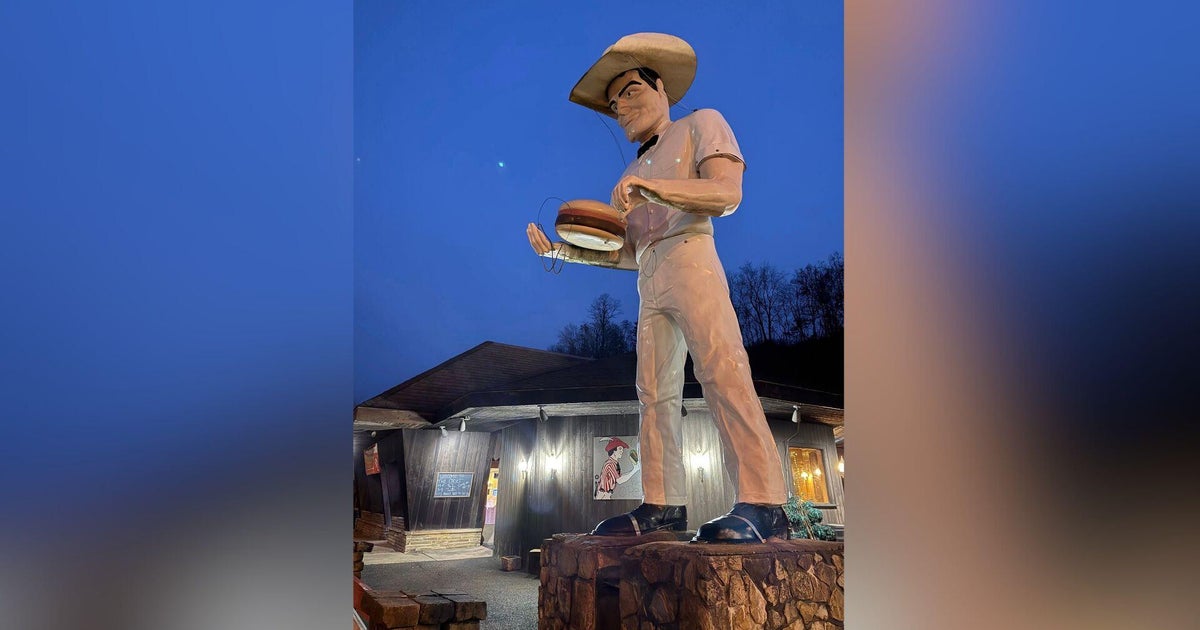Nature up close: White deer
By "Sunday Morning" contributing videographer Carl Mrozek.
The white deer featured in December 30's Moment of Nature video are part of the largest known population of white deer in the world, which is centered at the old Seneca Munitions Depot in Seneca County, New York, in the heart of the Finger Lakes. This pillar of the Cold War comprises 10,600 acres, completely enclosed with six-to-eight-foot chain-link fencing topped with double strands of barbwire. The reason for the "high security" is that, for much of the Cold War, it harbored one of the largest stockpiles of nuclear munitions in the U.S. The high fencing was designed to make it extremely challenging for anyone to get their hands on any of the nuclear weapons and to escape with them.
A side effect of the high security environment, which started in 1941, was to make it fairly challenging for deer to enter or leave the Depot as well. Over the past seven to eight decades this has resulted in considerable inbreeding. Moreover, starting in 1951, a succession of base commanders have protected the white deer from hunting, except as necessary to keep them from outnumbering their brown cousins, which were hunted annually to prevent overpopulation.
Over the years, up to 300 white deer and 500-600+ brown deer have populated the Depot and adjacent farmlands. Today the white deer numbers are somewhat below that high-water mark, but still comprise a substantial minority of the deer population there.
While relatively rare, the Seneca white deer are not an endangered species per se, but rather exhibit a rare genetic variation found among many species of wildlife, but in this case in white-tailed deer. White deer can result from two primary genetic mutations, leucism and albinism. Leucism is a general term for the phenotype resulting from defects in pigment cell differentiation stemming from excessive inbreeding. This renders some or all of their cells incapable of making any pigment, which results in their all-white or partially-white (piebald) coats. Hence, as stunning as they are, white and whitish deer are the result of mutations of recessive genes broadly distributed in white-tailed deer populations.
Some wildlife managers have estimated that leucism may manifest itself in 1-2% of all deer in a given regional population, although pure white deer are much more exceptional. Pure white deer are more likely to occur where deer movement (and the mixing of genetic lineages) is minimal, as when constrained by formidable physical barriers like lakes and rivers, highways, malls, factories, high fences, etc. Unlike albino deer which have white hooves and pink eyes and fairly poor vision, leucistic deer have dark noses, hooves and eyes with normal vision. Also they can range from full white to mostly brown with white patches (and vice versa), and everything in-between. Also, deer experts have suggested that a high percent of leucistic deer have health issues and are much more vulnerable to animal predators and hunters; most don't survive their first year. This further explains why sightings of white(ish) deer are so rare.
White deer (and antelopes) of various species have been reported for centuries, not only in North America but in Africa and Europe as well, and have been revered by many people fortunate enough to encounter them. Various African peoples have considered it bad luck to kill white antelope, gazelles, etc. Likewise in Europe and in the British Isles, Celts believed that white deer were messengers from the netherworld and hence were respected and protected.
White stags (of European red deer) have been especially revered. The emblem of England's King Richard II's featured a white stag wearing a gold crown and chain. Robert Stephenson Smyth Baden-Powell, the British military officer who founded the Scouting movement, called the white stag "the true spirit of Scouting, springing forward and upward, ever leading you onward to leap over difficulties." Jägermeister, a German alcoholic beverage designed to aid in digestion and in social situations, features a piebald stag with an impressive rack on its label. Also, legend has it that Sts. Eustace and Hubert were converted as a result of their encounter with a particular white stag.
Leucistic (white-tailed) deer, particularly the piebald variants, may be encountered almost anywhere that white-tailed deer occur. Historically though, there have been persistent reports of white deer from several other states, including Wisconsin, Minnesota, Michigan Maryland, and Virginia. However, the Seneca County white deer herd is unquestionably the largest and most accessible white deer herd in the U.S., if not the world.
For the past decade-and-a-half, the Seneca white deer population was at risk of being diluted and dissipated after the U.S. Army decommissioned the Depot and transferred title to the Seneca County Economic Development Agency, in 2000. Under SCEDA, a maximum security prison was constructed on the eastern flank of the property and a large ethanol manufacturing plant was also proposed for the heart of the Depot. However, friends and allies of the white deer, including many principals in the Finger Lakes tourism business, opposed it and proposed a tourism-friendly alternative which entailed preserving the white deer herd.
This ultimately resulted in the formation of Seneca White Deer, Inc. Spearheaded by Dennis Money, the group is now in the process of transforming the Depot into a conservation park, called Deer Haven Park, with a Cold War museum component. Visitors who take the weekend bus tours get to enter one of the 519 concrete bunkers where thousands of tons of munitions were stored – and see a true rarity of nature.
See also:
- Seneca White Deer, Romulus, N.Y.
- Follow Carl Mrozek on Facebook
- Behind the scenes: Filming bats by Carl Mrozek
To watch extended "Sunday Morning" Nature videos click here!







